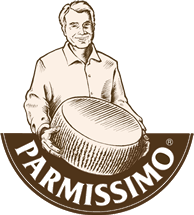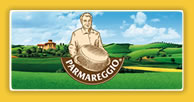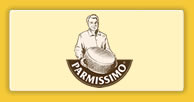 Nutritional - the connoisseur
Nutritional - the connoisseurFollow me and discover the tasty world of Parmigiano Reggiano, a food whose nutritional qualities make it suitable for people of all ages. I'll tell you about when Parmigiano Reggiano was born, about 900 years ago. A story of time-honoured taste.
Parmigiano Reggiano: differences with Grana Padano
Many people think that Parmigiano Reggiano and Grana Padano are the same thing. Indeed, the production technology is quite similar; however, there are some major differences, such as the curing period and the cow feeding.
Then there is a geographical difference. Parmigiano Reggiano is made solely in the provinces of Parma, Reggio Emilia, Modena, Bologna and Mantua, a territory skirted by River Reno and the Po, where cows are fed only with locally grown fodder.
Here are the main differences between the two:
Many people think that Parmigiano Reggiano and Grana Padano are the same thing. Indeed, the production technology is quite similar; however, there are some major differences, such as the curing period and the cow feeding.
Then there is a geographical difference. Parmigiano Reggiano is made solely in the provinces of Parma, Reggio Emilia, Modena, Bologna and Mantua, a territory skirted by River Reno and the Po, where cows are fed only with locally grown fodder.
Here are the main differences between the two:
| Parmigiano Reggiano | Grana Padano | |||
|---|---|---|---|---|
| Cow feeding | The Parmigiano Reggiano Consortium provides solely for fresh fodder and hay. | The Grana Padano Consortium allows using also silage i.e., grass harvested and then stored in silos. | ||
| Processing | Parmigiano is made only once a day with the milk of the previous evening partly skimmed in dedicated tanks to which the fresh morning milk is added. | It is made with raw milk of maximum two milkings of the same day and partly skimmed by leaving the cream to rise to the top. | ||
| Preservatives | Strictly prohibited. | Preservatives allowed because the use of silage involves greater contamination risks. Lysozyme, (2-2.5 mg/l) is used as antifermentative to prevent the formation of bacterial cultures in the wheels during the long curing period. | ||
| Curing | minimum 12 months and up to over 30 months. | minimum 9 months. | ||
| Production area | Provinces of Parma, Reggio Emilia, Modena, Bologna (left bank of River Reno) Mantua (right bank of River Po). | The territory covers some provinces of Piedmont, Lombardy, Veneto, Emilia Romagna and Trentino. | ||
















